The Zoom R20 is a compact all-in-one multi-track recorder with 16 tracks, integrated stereo effects, and a touchscreen with DAW-style editing.
Update: official release
In recent years, more and more musicians have switched to pure hardware-based setups. Also known as DAWless music production. Computers off and on the hardware Synths, drum machines … If you want to capture these jams you can often not get around the computer. Because it is fast and cheap. Unless you use dedicated hardware that is capable to record everything.
Many modern, digital mixers have integrated recording functions where you can record the stereo sum or even all tracks individually on an SD card. The disadvantage often, these are often relatively large and cumbersome for quick jams. Zoom today announced the R20, a multi-track recorder that fits in any jam bag. Very exciting for mobile musicians.
Zoom R20
The Zoom R20 is a new all-in-one digital multi-track recorder with 16 tracks from Zoom in a very compact format. 8 of the 16 tracks can be recorded simultaneously in 44.1kHz and 16/24bit. The device does not seem to be able to record higher, which is a great shame, especially in 2021.
Two of its 8 eight inputs are XLR 1/4”, while the other six offers classic XLR connectors. Phantom is also available on the inputs 5-8 so you can also connect microphones to it. In addition to its compactness, it is very hands-on. You get for each input dedicated gain control, record arm button, and level fader. Thus, you have everything under control with your fingers, exactly what you want to see in a hardware-focused system.
Then, you have six transport buttons on the right side including click, rew, ff, stop, play, and record. Very few controls but that is due to the touch display. The Zoom R20 features a 4.3” touchscreen for multi-track editing. The interface is reminiscent of a small portable DAW with your audio tracks display. It offers classic features like split, copy, paste, and more. Of course, you can also move the color-coded regions at the touch of your finger.
Onboard Effects & More
As in the Zoom L-series, the R20 also comes with onboard studio-quality effects such as a compressor, limiter, 3-band equalizer, noise gate, guitar & bass amp modeling, and a reverb. The limiter gets bonus points, an important feature that the L-series lacks. Very important for jams. Also included are 150 rhythm loops and 18 synth sources, which can be played via MIDI or edited on a piano roll interface on the touch screen.
However, it lacks real MIDI ports, so it will probably work over the USB-C port on the side. The same is also there for using the R20 as an audio interface for your PC/Mac or iOS devices. It operates as an 8 in/4 out audio interface on macOS/Windows while on iOS only with 2 ins/2 outs. Another USB port allows you to connect an optional Bluetooth adapter for establishing a wireless connection to a smartphone and remote-controlling the recorder using the R20 Control app.
Next to the USB ports, you have an SD card slot. The R-20 records onto SDXC cards with a capability of up to 1TB. That should be enough for most jams.
A very exciting device especially for hardware-focused mobile musicians. A downer for me is the 44.1 kHz recording quality limitation. In 2021 I expect higher specs facing the H6 or the H8 “kraken”. Both have been offering higher recording rates for a long time. Nonetheless, a neat portable recorder.
Zoom R20 is available for pre-order for 399€/$399 USD. In US, the R20 is already in stock while in EU you have to be patient for another 3+ months
More information here: Zoom
Available at our partners

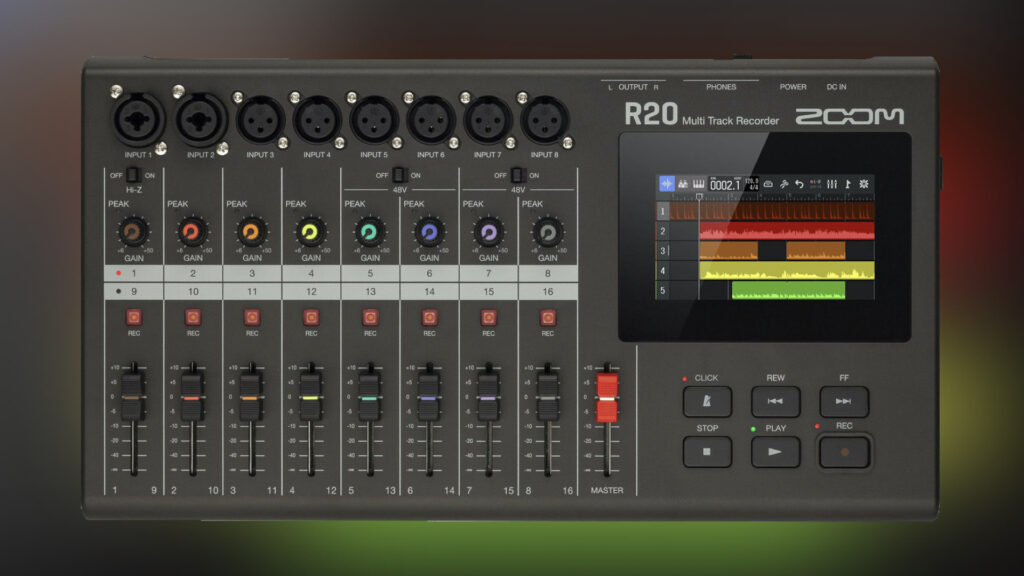
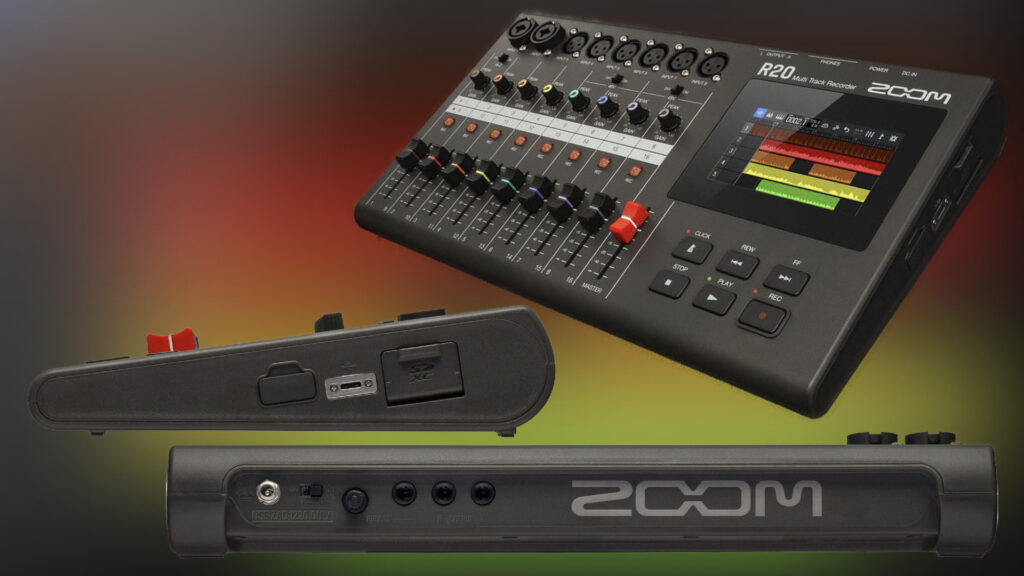
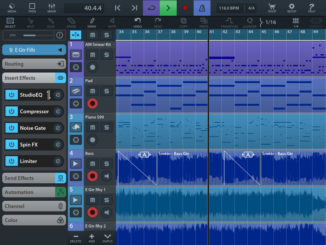
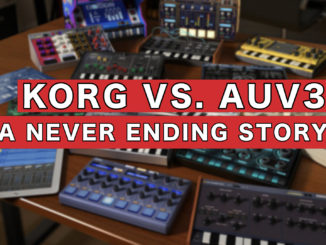
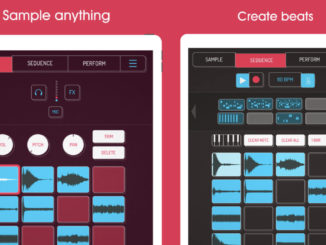
Wow, I’ve been waiting for something like this. More than bluebox, since it has full-fledged inputs, but without having to keep my computer open. Plus I was lucky enough to Jam once with the band in the video so I value their endorsement, even if paid.
Pretty disappointing that inputs 3-8 appear to mic level only.
Anyone wanting to use more than one synth or drum machine or external micpre is outta luck I guess.
I liked using my R16 with the direct outs from my live mixer but that’s not possible with the R20 unless you padded it down and converted to XLR.
The color display is cool if one can realistically edit on it but I’m not holding my breath there.
Also no MIDI.
Not sure what they were thinking here… seems like a fail unless your workflow is a couple of DI inputs and a few mics straight in.
Hopefully it is more robust than the R16 because that one was pretty fragile. Just plugging and unplugging cables and very gentle use killed mine after only two years.
3-8 have line-level so enough for synths, drum machines, etc. You can also activate 48V in case you need the power for microphones.
MIDI is probably possible via the USB but no MIDI sockets, yes that’s a shame.
Why would you NEED to record at any higher sample rate than 44.1?
With the wrong AD converter it might be an issue, and a source for aliasing. But if they picked one of the many that handles 44.1kHz correctly, or put a hi-cut filter on the input it wont be an issue. It seems though, that there are more AD converters that are tuned for 48kHz, rather than 44.1kHz, and such might give a slightly less good performance with 44.1 compared to 48khz mode on the same device, so if they picked one of those converters, they should have put a 48kHz mode in there as well, to be able to take full advantage of it, but if it is tuned for 44.1, there would be no reason for that.
Out hearing has limitations. One argument one might hear is pitching down samples. But one has to keep in mind that most microphones has a falloff of higher frequencies, so it will not record above 20kHz at the same level, that is if it even gets there many has the start of the falloff begin much lower. So that idea has flaws as well. And this isn’t the portable recorder for found-sounds, that one might want to pitch down.
There are some that believe that frequencies above our hearing influences sound within our hearing, but there is no science supporting that, and double blind tests have proven over and over again that people can’t hear the difference. But surely, if you have a microphone with the falloff getting quite steep at 15kHz, and your hearing reaches above that, and the source recorded has frequency content above that, one might be able to tell that there is a difference, but that then has to do with limitations of the microphone, and not the sample rate.
24Bit is useful in certain recording situations, as with the right equipment connected to it, one might be able to get a little dynamic headroom. 16Bit, is enough dynamic range for playback, so it should be fine for most situations where you can have good control of the recording levels. In theory, 32bit could be useful for even more headroom, but as far as I know, no recording device handles even the dynamic range of 24bit fully, and if I missed one, surely, it would not be a low end product like this, and if there is one, it would just about pass the dynamic range of 24 bit, and actually not really be able to take advantage of 32bit.
I’m not a fan of the number 44.1, and if I could choose, would love to see 64kHz, as that would be a number I would prefer. But that has nothing to do with the frequency range captured and how a human can hear it. I would also pick 48kHz over 44.1, for the number, and since with don’t live with the CD-spec anymore, really, I see little reason for not moving to 48Khz, especially, since some converters seems better tuned for it.
Good reflections. Thanks.
Why not just make track limitations based on how much space you have on an SD card. What a ripoff. People just want a daw in hardware form…no one will give it because to them it’s like giving money away for free cause they can just come out with a bigger more expensive one later that has like 20 tracks instead of 16 for like 300 bucks more. Realistically if I’m recording a song i need like 60 or more tracks depending on how layered I want things…so 16 tracks won’t cut it for any serious musician that isn’t just playing an acoustic bass and drums….
“16 tracks won’t cut it for any serious musician that isn’t just playing an acoustic bass and drums.” Yeah, those late Beatles albums recorded on 4- and 8-track machines are terrible. Same with Jimi Hendrix’s recordings on 4-, 8-, and 16-track machines. No layers. What amateurs.
Is there a reason why R20 is not able to power my midi controllers even though the “USB MIDI Keyboard”switch is on?